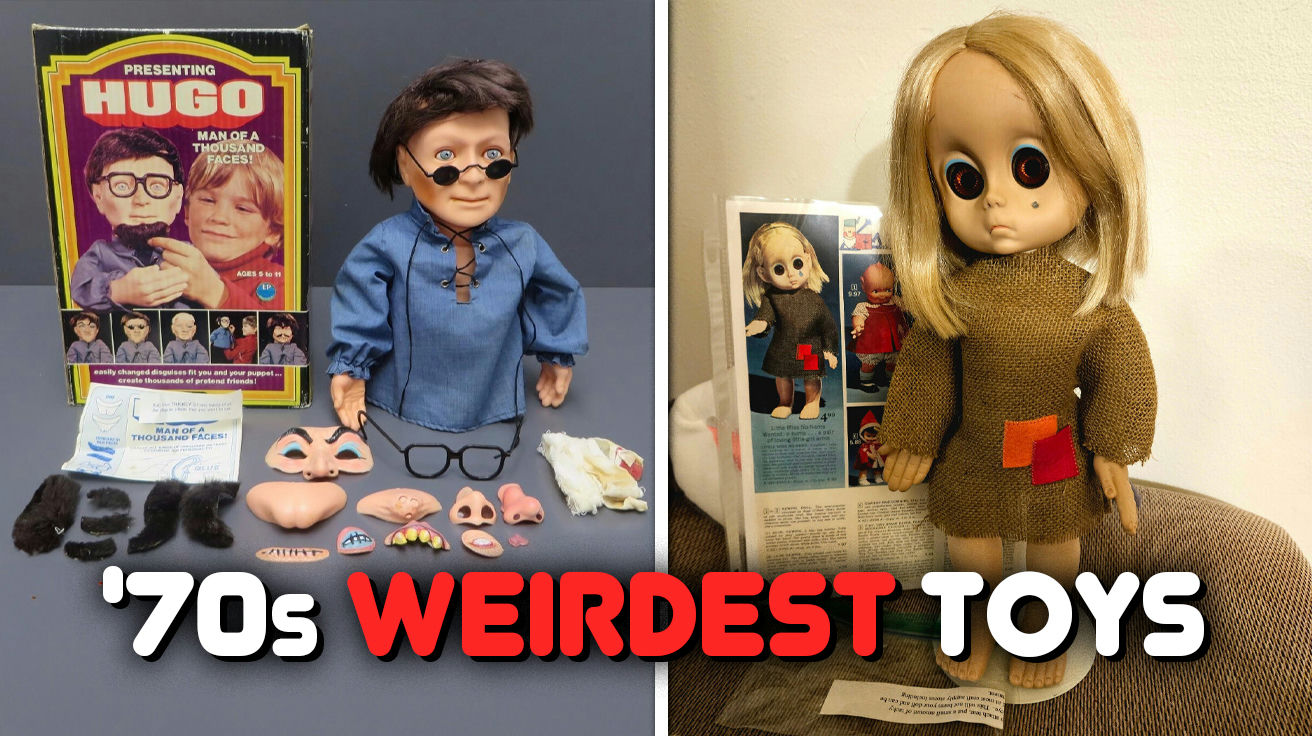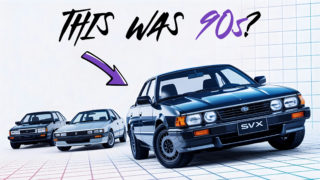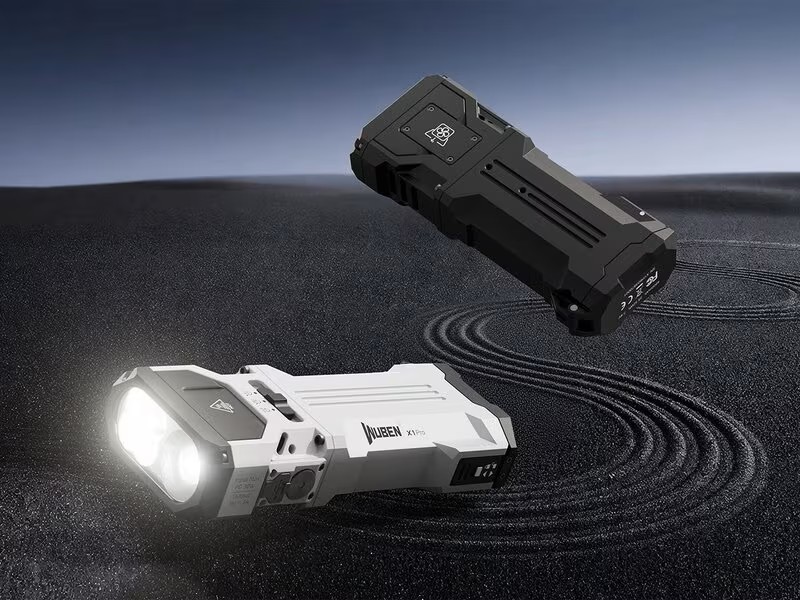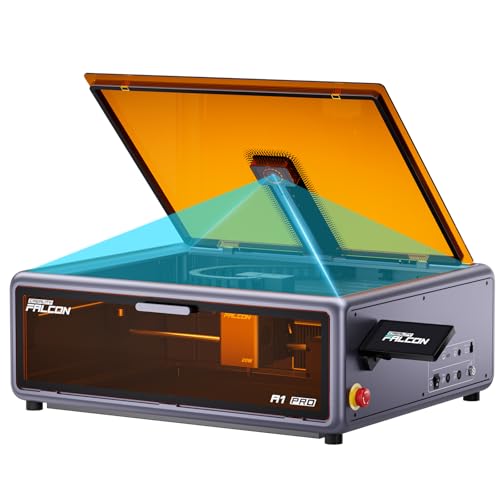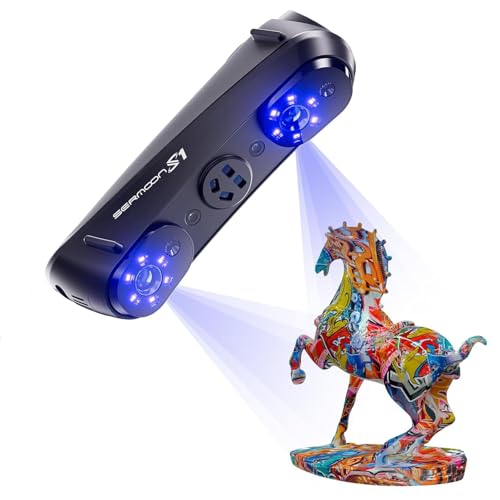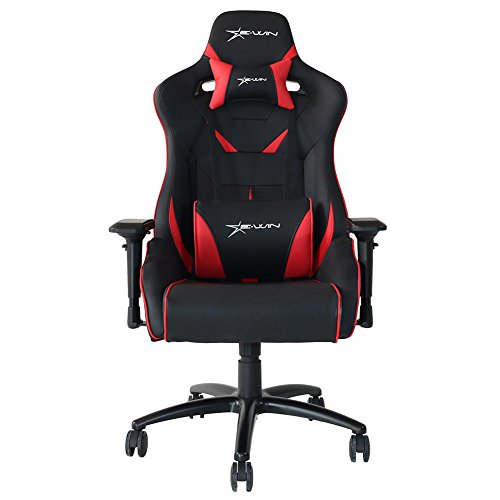The 1970s toy landscape reads similar to a horror movie written by someone who deeply misunderstood children. While today’s parents fret over screen time and age-appropriate content, their own childhoods were filled with toys that would make modern safety inspectors spontaneously combust. This wasn’t just poor judgment – it was an entire industry operating in a regulatory Wild West, creating playthings that reflected a society caught between post-60s experimentation and pre-Reagan traditionalism.
Between Vietnam’s conclusion and Star Wars’ cultural takeover, toy manufacturers enjoyed unprecedented freedom to market the bizarre, unsafe, and occasionally traumatizing. Children weren’t protected – they were test subjects in a decade-long experiment that asked: “How weird can toys get before someone stops us?” The answer, as the following nightmares-in-plastic demonstrate, was apparently “much weirder than you’d think.” Many of these products couldn’t get past a modern company’s legal department, yet they shaped an entire generation’s understanding of play, fear, and what constitutes an appropriate gift for a five-year-old.
43. Hugo: Man of a Thousand Faces

Introduced in 1975 by Kenner, Hugo: Man of a Thousand Faces stands as perhaps the most unsettling toy ever to receive corporate approval. This plastic bald head with its dead-eyed stare served as a canvas for children to apply wigs, facial hair, and makeup – essentially teaching the fundamentals of disguise and manipulation. In today’s surveillance state, it would probably trigger an FBI watchlist alert if purchased alongside duct tape and rope.
The toy embodies the 1970s’ more relaxed approach to childhood play, when companies regularly released products that would spark parental protest movements today. Hugo taught hands-on lessons about facial recognition and identity cues decades before these became hot topics in privacy debates. Children experimenting with Hugo’s appearance inadvertently learned how significantly small changes to facial features affect perception – knowledge now central to discussions about facial recognition technology and privacy concerns. The toy’s enduring reputation as “creepy” speaks to our instinctive discomfort with malleable identity, a psychological boundary Hugo cheerfully crossed in service of playtime.
42. Baby Laugh a Lot

Remco’s 1976 doll answered the question nobody asked: “What if my child’s toy sounded like it was being possessed in real-time?” Fresh batteries produced a cheerful giggle, but as power drained, that innocent sound transformed into something straight from The Exorcist’s cutting room floor. Nothing enhances bedtime quite like a demon-voiced doll cackling in the dark corner of a child’s room.
This mechanical monstrosity demonstrates how thin the line between delight and terror actually runs. The unintentional horror show created by dying batteries taught an entire generation that technology can’t be trusted – a lesson that became handy when computer viruses emerged years later. Parents who wondered why their children suddenly refused to sleep alone failed to connect the dots to the battery-powered nightmare machine they’d thoughtfully provided as a companion.
41. Jolly Chimp

Before horror directors needed to invent creepy toys for their films, they could simply point cameras at the Jolly Chimp – a cymbal-clashing monkey whose dead-eyed stare suggested it had seen things no primate should witness. This mechanical abomination moved with just enough realism to plant seeds of doubt about whether it moved when nobody was watching, like a simian version of Toy Story directed by Stephen King.
The toy’s popularity demonstrates how the 1970s operated on an entirely different understanding of what brings children joy. Modern psychological research might question the wisdom of normalizing a trapped animal performing for human amusement, but that concern didn’t register when manufacturers shipped thousands of these nightmare-fuel dispensers to department stores nationwide. The same design has appeared in more horror films than some established actors, which should tell you everything about its lasting psychological impact.
40. Growing Up Skipper

Mattel’s 1975 Growing Up Skipper solved the pressing problem of children not being uncomfortable enough about puberty by creating a doll that physically developed breasts when rotated. The audible clicking sound that accompanied this transformation ensured nobody missed the moment Skipper left childhood behind – a feature exactly zero children or parents requested.
This toy emerged during the women’s movement, yet somehow missed every conversation about body positivity and healthy development. The doll’s instant puberty mechanism reduced a complex biological and emotional process to a simple twist, creating the impression that womanhood arrives suddenly similar to a surprise party nobody wanted to attend. Barbie’s empire has produced many questionable products, but Skipper’s mechanical maturation stands as perhaps the most misguided attempt to make anatomical changes into family entertainment.
39. Ventriloquist Dolls

The 1970s ventriloquist doll trend seemed designed specifically to answer one question: “How can we ensure children develop lifelong sleep disorders?” These dead-eyed monstrosities with movable mouths and fixed, unblinking stares combined all the comforting elements of funeral home aesthetics with the joy of pretending inanimate objects can speak. Hollywood horror directors later saved millions on special effects by simply pulling these dolls from storage.
Television’s ventriloquism boom brought these unsettling companions into homes nationwide, despite overwhelming evidence that most ended up hidden in closets or attics within weeks. Their abandoned status speaks to the universal human instinct to distance oneself from things that trigger our deepest evolutionary warning systems. Modern horror franchises similar to Annabelle simply capitalized on trauma already established by these playthings, which countless children swore moved on their own during the night.
38. Super Elastic Bubble Plastic

Nothing captures the 1970s approach to child safety quite like Super Elastic Bubble Plastic – a chemical cocktail allowing kids to blow goop into colorful bubbles while inhaling fumes that would trigger modern hazmat responses. The toy’s distinctive smell, reminiscent of a nail salon located inside a chemistry lab, was merely considered part of the experience rather than a warning sign that perhaps this activity belonged in a ventilated area.
This product embodied the decade’s “eh, they’ll probably be fine” attitude toward safety regulations. Children gleefully huffed acetone and ethyl acetate fumes while creating briefly beautiful bubbles that hardened into fragile keepsakes – a perfect metaphor for the short-term fun, long-term consequences approach that defined the era. That same generation later wondered why their respiratory systems seemed particularly vulnerable during adulthood, connecting those dots similar to detectives in the final scenes of a mystery film.
37. Milky the Marvelous Milking Cow

Kenner’s 1977 plastic bovine with rubber udders that children could actively milk raised questions about which marketing meeting went severely off-track. This toy promised authentic farm experiences but delivered a plastic cow that developed the distinct aroma of forgotten gym clothes when water inevitably stagnated inside its udder reservoir. The path from educational concept to moldy science experiment happened faster than disco’s rise and fall.
Milky revealed the gap between innovative toy concepts and practical household realities that defined many 1970s playthings. Parents quickly learned that combining water, rubber, plastic, and children’s irregular attention spans created perfect conditions for bacterial growth that would impress medical researchers. The toy’s transformative journey from farm simulation to biohazard demonstrated why sometimes traditions like simply telling children where milk comes from work better than hands-on demonstrations.
36. JJ Armes

The mid-1970s JJ Armes action figure broke genuinely new ground by being based on a real detective who used prosthetic hooks after losing his hands. While modern companies carefully focus-group every potential sensitivity, Ideal Toy Company simply thought, “Kids will love this guy with hooks for hands” and shipped it to stores nationwide without considering the complex implications of marketing disability as a playtime feature.
This toy existed in a unique cultural moment between insensitivity and genuine representation, reflecting society’s evolving understanding of disability. Some viewed the figure as empowering – showing that physical differences didn’t prevent heroism – while others questioned whether turning prosthetics into a play feature commodified disability. This tension demonstrates how 1970s toys often stumbled accidentally into important social conversations, similar to how Bruce Willis accidentally discovered his supernatural abilities in The Sixth Sense.
35. Big Jim’s Wolfpack

Mattel’s Big Jim’s Wolfpack action figures married opposing concepts with the confidence of someone who hasn’t realized they’re making a mistake. These military-themed warriors came dressed for both combat and a beach volleyball tournament, wielding weapons while sporting leisure wear. The conceptual whiplash felt similar to watching someone prepare for both a job interview and a pool party simultaneously.
The figures emerged during post-Vietnam America’s complex relationship with military imagery and growing interest in California’s laid-back lifestyle. Their karate-chop action and realistic weapons satisfied action play requirements, while their casual attire softened the military edge into something parents found more acceptable. This peculiar combination reflected America’s attempt to rebrand masculinity after a controversial war, packaging strength with a softer, more recreational vibe that wouldn’t remind anyone of evening news footage.
34. Pulsar

Mattel’s 1977 Pulsar action figure turned anatomy class into playtime with a transparent chest cavity revealing removable glowing organs. This toy taught children that heroes aren’t defined by what’s on the outside, but rather by having properly arranged internal organs that light up – a lesson missing from most modern children’s programming. His battle against the mind-controlling villain Hypnos suggested that organ inspection would somehow save humanity.
Pulsar emerged during increasing interest in science education and the sci-fi boom following Star Wars, creating an educational dimension rarely seen in action figures. The figure’s unique design bridged biological curiosity with action play, essentially creating “My First Autopsy: The Action Figure.” The toy’s clear statement that heroes should be transparent about their internal workings created a strange moral framework that no child actually requested or required.
33. Jaws Board Game

After Spielberg terrified millions about ocean swimming, Ideal naturally thought “let’s bring that fear home” with their 1975 Jaws game. Players performed the nerve-wracking task of extracting items from a spring-loaded shark mouth before it snapped shut, essentially creating a marine-themed version of Operation with added psychological trauma. The game transformed Spielberg’s masterpiece of tension into a plastic recreation of the film’s most traumatic moments.
This game exemplified how 1970s entertainment began crossing media boundaries, with movies directly influencing toy design in increasingly literal ways. Rather than creating symbolic representations of films, manufacturers began recreating specific scenes – in this case, the precise moment when characters faced violent death at sea. This approach to licensed products revealed how quickly pop culture began consuming itself, similar to how the Terminator franchise eventually became about its own existence.
32. Hasbro’s Great Moves Game

Hasbro’s 1978 Great Moves Game strapped whiteboards to players’ backs and pens to their bodies, creating an artistic experience that valued physical contortion over actual drawing skill. This bizarre contraption transformed family game night into something resembling a scene from a spy film where characters must diffuse bombs while wearing oven mitts. The whole concept felt like it was designed after watching too many episodes of Twister gone wrong.
This awkward physical challenge reflected the late 1970s trend toward more active, body-engaging entertainment that would later evolve into the electronic gaming revolution. The cumbersome equipment and focus on physical coordination over strategy revealed a toy industry desperately seeking new gameplay mechanics before technology would render many of their concepts obsolete. Players contorting themselves to create barely recognizable drawings perfectly captured a decade reaching for new ideas while lacking the tools to execute them properly.
31. Creepy Crawlers

The Creepy Crawlers toy set encouraged children to pour potentially toxic “Plastigoop” into metal molds and heat them in miniature ovens, combining all the educational benefits of handling chemicals with the safety of letting kids use heating elements. This 1970s favorite treated concerns about burns, fumes, and ingestion risks with the same seriousness that Jurassic Park treated dinosaur containment protocols.
This hands-on toy reflected the decade’s assumption that minor injuries represented an acceptable trade-off for creative play. The resulting rubbery spiders and insects delighted children while concerning more safety-conscious adults, creating a generational divide about acceptable risk levels in toys. The entire Creepy Crawlers concept operated on the principle that what doesn’t send a child to the emergency room makes them stronger – a philosophy that dominated toy design before liability concerns transformed the industry similar to how Gremlins transform when wet.
30. Sunshine Family Dolls

Mattel’s 1974 Sunshine Family Dolls represented the corporate merchandising of counterculture values, essentially packaging hippie aesthetics for mainstream consumption. These simple, earth-toned dolls with their homemade furniture and sustainable lifestyle stood as Barbie’s crunchy cousins, offering an alternative vision of success that measured wealth in homemade crafts rather than dream houses. The irony of mass-producing anti-consumerist toys apparently escaped everyone involved.
These dolls emerged during the height of the back-to-nature movement, reflecting how quickly corporate America absorbed and monetized countercultural values. Their focus on sustainability, crafting, and simple living predicted trends that would return decades later as premium lifestyle brands. The Sunshine Family effectively demonstrates how capitalism processes resistance movements – turning critique into commodity faster than you can say “organic cotton tote bag.”
29. The Inchworm

Hasbro’s 1973 Inchworm ride-on toy proved that sometimes the simplest concepts work best. Children bounced on a spring-loaded seat to propel themselves forward with a satisfying clicking sound, creating a ride experience similar to how Mario progresses through video game levels – rhythmic movement accompanied by distinctive sound effects. This low-tech transportation device required no batteries, apps, or safety recalls.
This enduring toy represents the sweet spot between innovation and practicality that eludes many modern designers. Its bright green color and simple mechanics appealed to young children while its sturdy construction ensured it survived enthusiastic use. In an era that produced questionable chemical toys and nightmare-inducing dolls, the Inchworm stands as evidence that not everything from the 1970s requires explanation or apology – some designs simply understood what makes children happy without adding unnecessary complexity or psychological damage.
28. Disturbing Homeless Doll

Some toy concepts should never leave the meeting room, yet the “Homeless Doll” with its tattered clothing and haunted expression somehow made it to production. Marketed as an empathy-building educational tool, this well-intentioned but deeply misguided product reduced complex social issues to a costume, similar to how early disaster movies simplified climate science into convenient spectacle. The doll transformed structural social problems into simplistic character studies.
This controversial toy emerged during increased awareness about urban poverty, yet its superficial approach demonstrated the limitations of using play objects to address serious issues. Rather than promoting understanding, the doll often created discomfort without context, reducing real human struggles to aesthetic characteristics. Its commercial failure reveals that even in the anything-goes 1970s, consumers recognized when educational intentions crossed into exploitation territory.
27. Ronald McDonald Doll

The Ronald McDonald promotional doll from the 1970s proved that sometimes corporate mascots should remain safely contained in television commercials rather than staring at children from bedroom shelves. With its permanent wide smile and painted eyes that seemed to follow movement across rooms, this supposed brand ambassador caused more nightmares than Happy Meal purchases. Its uncanny presence felt similar to having a silent salesperson living in your home.
As fast food marketing to children accelerated throughout the decade, these corporate dolls demonstrated how commercial interests increasingly colonized childhood play spaces. The unsettling quality of the Ronald doll represents the sometimes jarring intersection of commerce and playtime that began dominating toy trends. Its legacy extends beyond mere promotion, influencing cultural perceptions of clowns in ways that no marketing team could have anticipated – or wanted – contributing to the archetype of the unsettling clown that still resonates in popular culture.
26. Verte Bird

The Verte Bird combined helicopter and car elements into one transforming toy, essentially creating the Swiss Army knife of imaginary transportation decades before Transformers dominated the market. This hybrid vehicle with folding blades that became wheels captured the decade’s technological optimism after the moon landing but before the energy crisis fully registered – a brief window when combining vehicles seemed like the solution to future transportation challenges.
This innovative toy emerged during significant shifts in transportation consciousness, reflecting dreams of versatile, efficient vehicles that could adapt to different environments. Similar to how Back to the Future Part II imagined hoverboards as the logical evolution of skateboards, the Verte Bird proposed that future vehicles would simply combine existing forms rather than reinvent them. Its modest success showed that children embraced the concept of transformation long before Japanese robot toys mastered the format.
25. Toy Cigarettes and Pipes

Nothing captures shifting cultural standards quite like toy smoking paraphernalia, which allowed children to practice future lung disease with parental approval. Candy cigarettes and bubble-blowing pipes came in packages mimicking actual tobacco products, essentially providing brand familiarity training for products children couldn’t legally purchase for another decade. The entire concept now seems as reasonable as giving kids toy bottles of scotch.
These products emerged from an era when smoking appeared in everything from cartoons to doctor’s offices, reflecting society before public awareness campaigns highlighted health risks. The toys’ widespread acceptance demonstrates how dramatically parenting standards have evolved since the 1970s. Their disappearance from toy aisles represents one of the few cases where increased regulation clearly protected children rather than merely sanitizing play, similar to how removing lead paint from toys prevented actual rather than theoretical harm.
24. Pogo Sticks

While other trends came and went, pogo sticks remained consistently popular throughout the decade, offering the unbeatable combination of outdoor activity, moderate danger, and the opportunity to be slightly taller than normal for brief moments. Mastering the rhythmic bouncing brought neighborhood respect and the distinctive spring sound created a soundtrack for 1970s summers that no Spotify playlist can properly recreate.
This enduring toy demonstrates that sometimes the simplest concepts remain the most satisfying – a principle many modern toy manufacturers forget while adding unnecessary apps and features to basic play concepts. The pogo stick’s physical challenge requires practice and delivers measurable progress, creating an analog achievement system more satisfying than many digital alternatives. Unlike toys that reflected questionable 1970s values or dangerous materials, the pogo stick represents timeless play that continues attracting new generations without needing justification, explanation, or warning labels.
23. Wooly Willy

The Woolly Willie magnetic toy achieved peak popularity in the 1970s by understanding a fundamental truth about human nature: people enjoy temporarily altering appearances without consequences. This toy let children manipulate iron filings with a magnetic wand to create endless hair and facial hair combinations on a cartoon face – essentially Photoshop filters in physical form decades before digital image manipulation became commonplace.
The toy’s brilliance came from its open-ended creative possibilities combined with instant results and zero commitment – you could give Willie a magnificent beard and erase it seconds later if it didn’t meet expectations. This same satisfaction drives modern face-swapping apps and filters, revealing how little human fascination with consequence-free transformation has changed. Woolly Willie’s enduring appeal demonstrates that successful toys often tap into timeless psychological desires rather than chasing trends, making this simple magnetic toy more insightful about human nature than many sophisticated alternatives.
22. Baby Come Back

Before AI assistants pretended to care about your feelings, Baby Come Back pioneered the art of mechanical emotional manipulation. Press a button and watch as this doll scooted toward children with an eagerness that made actual babies look unmotivated. The genius wasn’t in the technology (which was basically a glorified wind-up car), but in the psychological hook – a toy that seemed to need you.
The doll marked the early stages of what would become a full-blown attachment economy. While today’s parents battle screen addiction, 1970s families dealt with children forming deep bonds with chunks of plastic programmed to mimic need. Baby Come Back taught corporations a valuable lesson they’ve exploited ever since: humans will form emotional connections with just about anything that moves toward them when called. Think WALL-E but with more crying when the batteries died.
21. Super Spirograph
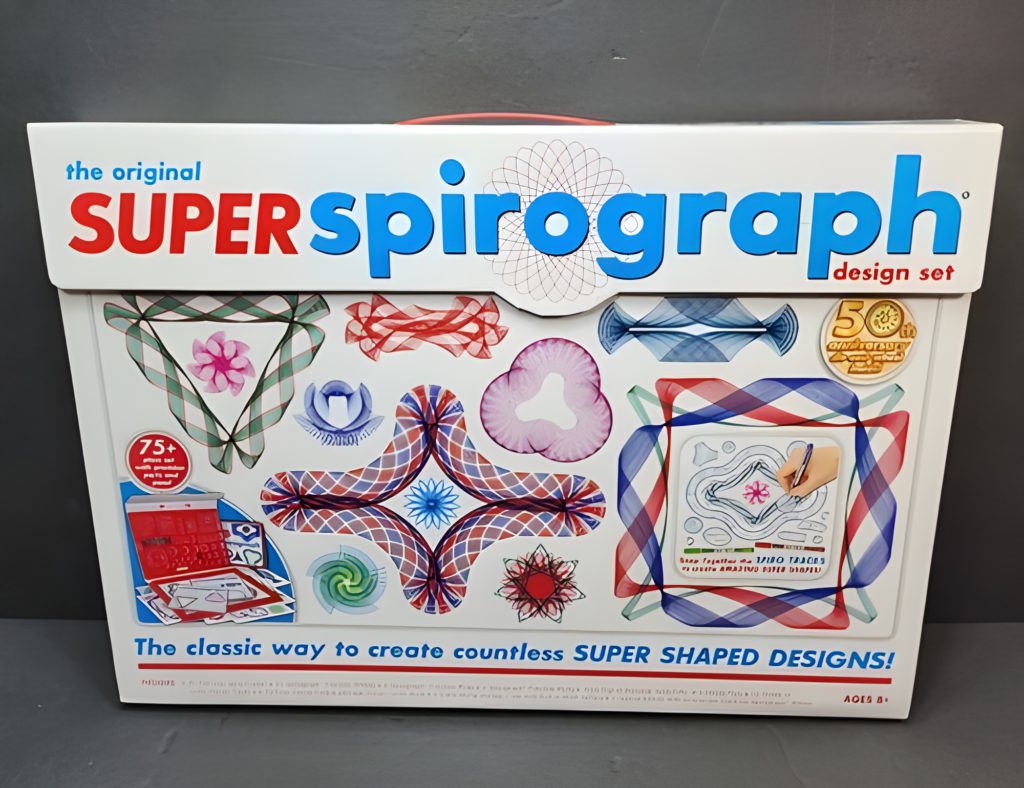
While the Pentagon was busy developing stealth bombers, American children were conducting their own geometric experiments with plastic gears and pens. Super Spirograph sneakily delivered advanced mathematical concepts into living rooms nationwide – calculus and geometric theory disguised as colorful loops and swirls. The toy turned kids into accidental math prodigies who never realized they were learning.
Beneath the rainbow patterns lay something more profound: a rare toy that fostered both artistic expression and technical precision. The Spirograph found that sweet spot between the humanities and STEM before anyone even used the acronym. Kids who couldn’t sit still for five minutes in math class would spend hours perfecting intricate designs, unwittingly absorbing concepts of ratios, symmetry, and rotation. It was education through the back door, like hiding vegetables in a brownie recipe.
20. Weebles

In a decade marked by political scandal and economic instability, Weebles stood as a bizarre counterpoint to American anxiety. These egg-shaped figures with weighted bottoms refused to topple no matter how hard you pushed them – a physics lesson and an accidental metaphor for resilience packed into two inches of plastic. Children intuitively understood what adults needed reminding of: recovery is possible.
The toy’s stubborn refusal to stay down made it the unofficial mascot for emotional stability in uncertain times. While adults watched Nixon resign and gas prices soar, kids were learning that persistence comes from your center of gravity. Hasbro’s marketing team struck gold with their slogan about wobbling but not falling down – a phrase that would fit equally well on motivational posters or as tattoos for rehab graduates. Sometimes the deepest life lessons come from the simplest toys.
19. Ants in the Pants

Before game developers spent millions crafting digital dopamine loops, Ants in the Pants captured the perfect balance of skill and luck with nothing more than plastic pants and spring-loaded insects. The premise reads like something conceived during a fever dream: flick toy ants into oversized pants while competing against siblings for absolutely no prize whatsoever. Yet this bizarre concept sold over 8 million units.
The game’s genius lay in its precise calibration of difficulty – challenging enough to create tension but simple enough for five-year-olds to master. No batteries, no screens, no updates needed. In an era before helicopter parenting, games like this occupied children for hours with the simple pleasure of launching fake bugs into fake clothing. Its popularity serves as a harsh rebuke to today’s over-engineered entertainment that often leaves kids more frustrated than fulfilled. Sometimes victory is measured in how many plastic ants you can get into fabric pants.
18. Construct-O-Straw

While modern parents drop hundreds on coding camps, 1970s kids developed engineering skills with drinking straws and plastic connectors. Constru-Straws transformed household waste into architectural wonders, teaching structural principles without a single worksheet or educational video. The toy operated on a radical principle: give children basic materials and trust their minds to do the heavy lifting.
The beauty of Constru-Straws lay in their non-prescriptive nature. Unlike today’s building sets with step-by-step instructions and predetermined outcomes, these flexible tubes encouraged true experimentation. Children learned firsthand about tension, compression, and structural integrity when their straw skyscrapers collapsed. Each failure taught valuable lessons about physics that no textbook could match. This hands-on approach to learning represents everything modern education often misses – the value of tactile experience and the freedom to fail productively.
17. Hungry Hungry Hippos

Released in 1978, Hungry Hungry Hippos served as the perfect metaphor for late-stage capitalism disguised as family entertainment. Four players frantically competed for limited resources (marbles) by controlling plastic hippopotamuses specifically engineered to consume as much as possible. The game’s soundtrack of clacking jaws and frenzied lever-smashing perfectly captured the era’s economic anxiety and growing consumer culture.
The game’s wild popularity revealed something primal about human nature – our deep satisfaction in acquiring things, even when those things are just small glass spheres. Milton Bradley accidentally created the perfect training ground for future Wall Street traders. Children learned valuable lessons about competition, scarcity, and resource hoarding while parents’ eardrums suffered through what was essentially a percussion concert performed by sugar-fueled kids. The plastic carnage created one household truth: nobody remembers who won, but everyone remembers how loud it was. Interested in more of what life in the 1970s was like? You might want to find out what was normal back then but is banned today.
16. Tomy Tutor Typer

The Tomy Tutor Typer stands as evidence that some toy manufacturers could see the digital revolution coming decades before parents understood it. This plastic typewriter with educational games quietly prepared an entire generation for keyboard fluency while schools were still using mimeograph machines and overhead projectors. Think of it as stealth tech training disguised as play.
The machine’s mechanical simplicity masked its revolutionary purpose. Without parental panic about screen time or digital addiction, children developed typing skills that would eventually become as essential as reading. The toy served as a Trojan horse for computer literacy, slipping valuable tech skills past the gatekeepers of childhood education. While educators debated whether calculators would ruin mathematical thinking, forward-thinking companies were already equipping kids with tools for the coming information age. The Tutor Typer wasn’t just ahead of its time – it was preparing children for a future most adults couldn’t yet imagine.
15. Fisher-Price Little People

Before smartphone apps offered dopamine hits through endless scrolling, Fisher-Price Little People delivered the analog version of world-building. These chunky wooden cylinders with painted faces populated tiny towns, farms, and airports where children served as both creator and destroyer. Each playset functioned as a miniature society where kids worked out everything from family dynamics to social hierarchies through play.
The genius of Little People lay in their deliberate lack of detail – their simplified forms required children to fill in the blanks with imagination. This stands in stark contrast to today’s hyper-detailed action figures that leave little room for mental elaboration. The toy’s open-ended nature allowed kids to process real-world observations by recreating and manipulating them in miniature. Parents watching closely might have noticed these play sessions often revealed more about a child’s understanding of the world than any conversation could. Little People weren’t just toys; they were processing tools for young minds making sense of a complex world.
14. Astro Ray Gun

The Astro Ray Gun represents the perfect intersection of Cold War paranoia and space race optimism molded in colorful plastic. This toy arrived at a cultural moment when Americans simultaneously feared alien invasion and dreamed of galactic exploration. With its flashing lights and otherworldly sound effects, it sold children a sanitized version of cosmic warfare without the existential dread that powered adult science fiction.
The toy’s popularity peaked as America’s actual space program faced budget cuts and waning public interest. As real astronauts struggled with the mundane challenges of space travel, kids blasted imaginary aliens with abandon. This contradiction epitomizes the 1970s approach to space – grand fantasies masking diminishing realities. The ray gun offered children a sense of cosmic agency during a decade when actual space achievements were becoming increasingly technical and less captivating to the public imagination. Much like “Star Wars,” it presented space as an exciting frontier rather than the complex scientific endeavor it had become.
13. Simon

Simon arrived in 1978 like an alien spacecraft landing in American family rooms. This circular electronic game with its hypnotic light sequences and monotone beeps marked the first time many households welcomed computer technology as entertainment rather than just business tools. While adults debated whether computers would ever have practical home applications, Simon was already programming children to follow digital commands.
The game’s mechanics seem almost prophetic in retrospect – humans responding to computer prompts with increasing speed and accuracy. Simon trained a generation in the call-and-response pattern that would define our relationship with technology: the machine instructs, the human complies. Its addictive gameplay loop (where failure only strengthened the desire to try again) foreshadowed the engagement mechanics of everything from video games to social media. In its colorful plastic case, Simon quietly prepared American culture for digital dependency while parents thought kids were just playing with lights.
12. Starsky & Hutch Toy Car

The Starsky & Hutch toy car represents the moment television executives realized children’s play could become a profitable extension of their content. These detailed diecast replicas, complete with the iconic red paint job and white stripe, weren’t just toys – they were physical manifestations of media consumption that extended screen time into playtime. Today we call this “branding synergy,” but in the 1970s, it was revolutionary.
These miniature Gran Torinos offered children something previous generations never had – the ability to physically interact with media narratives. Kids weren’t just watching stories; they were continuing them through play, becoming unofficial content creators for television franchises. This shift fundamentally altered the relationship between entertainment and toys. What began with simple car replicas eventually evolved into massive merchandise ecosystems where toys and content became so intertwined that it became impossible to tell which existed to sell the other. The Starsky & Hutch cars were just test-driving a business model that would eventually reshape both industries.
11. Mickey Mouse Disney Dancer Toy

The Mickey Mouse Disney Dancer Toy serves as a perfect case study in early brand extension strategy. With a simple push, this mechanical mouse performed a jaunty dance that delighted children while accomplishing something far more significant – training young consumers to form emotional attachments to corporate mascots. This dancing plastic rodent represented Disney’s early experiments in bringing screen characters into physical space.
The toy’s popularity revealed a psychological truth that corporations have exploited ever since: children process fictional characters as semi-real entities deserving of emotional investment. Each plastic Mickey that danced across a bedroom floor strengthened Disney’s hold on the American imagination. While parents saw a cute toy, Disney executives recognized something more valuable – a tangible ambassador building brand loyalty during the formative years. This mechanical mouse wasn’t just dancing; it was performing the important corporate work of customer acquisition at an age when critical thinking about media conglomerates hadn’t yet developed.
10. Fisher-Price Medical Kit

The Fisher-Price Medical Kit did something remarkable that most educational initiatives fail to accomplish – it made empathy entertaining. This collection of plastic stethoscopes, bandages, and syringes allowed children to process their own medical anxieties while developing caretaking skills. The toy served as a psychological vaccination, helping kids work through their own fears of doctor visits by putting them in the position of caregiver.
Behind its primary-colored plastic exterior, the kit contained something subtler than most toys – a framework for emotional development. Children who “treated” their stuffed animals were actually practicing perspective-taking and empathy, core social skills that many educational programs struggle to teach effectively. The genius of the medical kit was that it taught these lessons without feeling instructional. Much like “The Karate Kid” painting fences without realizing he was learning martial arts, children using the medical kit were developing emotional intelligence while thinking they were just playing doctor.
9. Kaleidoscope

The kaleidoscope’s resurgence in the 1970s wasn’t just nostalgia – it was a perfect analog response to an increasingly chaotic world. During a decade marked by political upheaval and economic uncertainty, this simple tube offered something precious: predictable beauty from random elements. Each twist produced a symmetrical pattern that brought order from chaos, providing a visual metaphor that resonated deeply with a generation questioning established structures.
Unlike most toys that lost their appeal after repeated use, kaleidoscopes delivered fresh content with every rotation. No two patterns were identical, yet all followed the same mathematical principles – unity emerging from diversity. The toy’s renewed popularity coincided with the rising interest in Eastern philosophy and meditation practices in Western culture. Its hypnotic effect offered a primitive form of mindfulness before the term existed in popular vocabulary. While adults turned to transcendental meditation or self-help books, children found their own path to present-moment awareness through these cardboard tubes filled with mirrors and colored beads.
8. Raggedy Ann and Andy Dolls

The Raggedy Ann and Andy revival of the 1970s represented a counterculture pushback against the plastic revolution. While most toy shelves filled with synthetic materials and electronic components, these cloth companions with their yarn hair and button eyes offered a deliberate return to handcrafted simplicity. Their resurgence wasn’t just nostalgia – it was an ideological statement about authenticity in an increasingly artificial world.
The dolls’ homespun aesthetic aligned perfectly with the decade’s back-to-nature movements and DIY ethos. Their deliberately imperfect appearance stood in direct opposition to the polished perfection of Barbie and other modern dolls. For parents concerned about consumerism and commercialization, these rag dolls offered a tangible alternative – toys with history and heart rather than marketing campaigns. The Raggedy renaissance wasn’t just about cotton versus plastic; it reflected a deeper cultural tension between mass production and handicraft values that continues to cycle through American consumer culture like fashion trends on a decades-long rotation.
7. Perfection

Perfection might be the most honest toy ever created about the American relationship with achievement and anxiety. This seemingly simple game – fitting shapes into matching holes before a timer expires – delivered childhood panic attacks disguised as entertainment. The ticking clock, the knowledge of impending failure, the explosive consequence – it reads more like a psychological experiment than family fun.
The game served as a perfect microcosm of performance pressure, teaching children that speed and accuracy must happen simultaneously while a clock counts down your remaining seconds. When the time expired and the board erupted in a chaotic explosion of plastic pieces, children experienced a miniature version of the public failure many adults spend their lives trying to avoid. Yet kids would reset and try again, building resilience through repeated small failures. Perfection wasn’t just teaching shape recognition; it was preparing children for standardized tests, job interviews, and every other timed performance assessment society would eventually throw their way.
6. Coleco Telstar Console

The Telstar Console looks primitive today – like comparing a horse-drawn carriage to a Tesla – but it represented the first moment digital entertainment invaded American living rooms. With graphics so basic they barely qualified as visual representation (essentially moving squares), this early gaming system nonetheless captivated families who had never experienced interactive electronic entertainment. It was the Model T of gaming – not the first, but the one that made the technology accessible.
The cultural impact far outweighed the technical specifications. Parents who purchased a Telstar were unwittingly installing the first digital portal in their homes, beginning a transformation of leisure time that would eventually restructure family dynamics and attention economies. The simple tennis and hockey games it offered seem laughably basic compared to today’s immersive virtual worlds, but they planted the seeds of a digital entertainment ecosystem that would eventually outgrow and consume nearly all other forms of media. Like watching the first fish develop legs, the Telstar shows us entertainment evolution at its earliest stage.
5. Evil Knievel Stunt Cycle

The Evel Knievel Stunt Cycle sold danger to children with parental approval – a marketing feat perhaps more impressive than any of the stuntman’s actual jumps. This toy glorified a man who became famous for frequently failing at stunts, often spectacularly and with serious injuries. Yet millions of parents happily purchased miniature versions of his vehicle for their children. The cognitive dissonance is remarkable, like buying your kid a “Professional Tightrope Walker Without a Net” playset.
The toy’s popularity reveals America’s complicated relationship with risk and safety. While playground equipment was being made safer and warning labels proliferated on products, children were encouraged to idolize and emulate a man whose entire career consisted of dangerous stunts. The toy operated like a gateway drug to thrillseeking – kids who launched plastic motorcycles over homemade ramps often graduated to launching their actual bikes over similar obstacles. The Evel Knievel brand effectively packaged and commodified risk-taking behavior, selling the adrenaline rush of danger while keeping actual parents just comfortable enough to make the purchase.
4. View-Master

The View-Master achieved what Instagram filters could only dream of – it transported users to entirely new worlds through nothing more complex than cardboard discs and plastic lenses. At peak popularity in the 1970s, this handheld device democratized virtual tourism decades before VR headsets. With each satisfying click of the advance lever, children accessed 3D images of places most would never visit in person – from the Grand Canyon to African savannas to Disney attractions.
This proto-VR technology expanded worldviews in an era when international travel remained inaccessible to most American families. The educational importance of this can’t be overstated – children in rural communities could visually explore distant landmarks, historical scenes, and foreign cultures through stereoscopic images that created the illusion of depth and presence. While contemporary debates rage about screen time limits, the View-Master reminds us that the desire to escape through visual media predates digital technology. The device didn’t just show images; it created an intimate viewing experience that felt like peeking through windows into other realities.
3. Tomy Pocket Games

The Tomy Pocket Games emerged as a solution to a problem most parents still battle: keeping children entertained during travel without resorting to sedation. These handheld mechanical games – featuring ball bearings, tiny mazes, and physical challenges – were the analog predecessors to the Game Boy, proving that portable entertainment didn’t require batteries or screens. They’re what fidget spinners wish they could be – actually engaging.
The engineering brilliance of these games can’t be overstated. Using nothing but gravity, simple mechanics, and human dexterity, they created genuinely challenging gameplay that couldn’t be easily mastered. Unlike modern mobile games designed with addictive psychology and dopamine triggers, Tomy’s creations relied on physical skill development and spatial reasoning. They represent a road not taken in gaming evolution – one where mechanical ingenuity rather than processing power determined a game’s value. As parents now struggle to limit their children’s screen time, these forgotten plastic puzzles offer a glimpse of an alternate timeline where digital dominance wasn’t inevitable.
2. Leap-Brite

Leap-Brite transformed darkened bedrooms into magical light laboratories through technology so simple it would baffle today’s iPad-native children. Invented in 1967 but reaching peak popularity in the 1970s, this creativity toy consisted of nothing more complex than a pegboard, colored transparent pegs, and a light source. Yet from these humble components emerged glowing masterpieces that cast colorful shadows across bedroom walls like stained glass windows in a childhood cathedral.
The toy’s brilliance lay in its fusion of art and science – children absorbed fundamental principles of light, color mixing, and pattern creation while thinking they were just making pretty pictures. Unlike today’s creative apps that often dictate outcomes through predetermined templates, Leap-Brite offered true blank-slate creativity with immediate, tangible results. The physicality of placing each colored peg by hand created a direct connection between effort and outcome that digital equivalents struggle to replicate. As modern childhood increasingly shifts toward screen-mediated experiences, the hands-on, physics-based magic of Leap-Brite represents a sensory richness many contemporary toys have abandoned in favor of convenience.
1. Knit Magic

Knit Magic performed the seemingly impossible task of making traditional craft skills appealing to children raised on television and video games. By eliminating the intimidating aspects of knitting – namely, the coordination required to manage two needles – this clever device democratized textile creation for young hands. It’s the 1970s equivalent of those meal kits that remove all the difficult prep work but still let you feel like you’re cooking.
The toy’s cultural significance extends beyond mere entertainment. By introducing fiber arts to children regardless of gender, Knit Magic quietly challenged the growing divide between mass-produced consumer products and handmade goods. Kids who created even simple items experienced the satisfaction of transforming raw materials into functional objects – a connection to production increasingly absent in an era of anonymous manufacturing. The toy offered a counterpoint to the throw-away consumer culture taking hold during the decade, teaching children that items created through personal effort carried value beyond what could be purchased. In essence, Knit Magic was stealth training for the modern maker movement, disguised as a plastic toy. If you enjoyed going through this list, then here are even more 1970s toys to look into, that you’ll probably reminisce as you read through.


